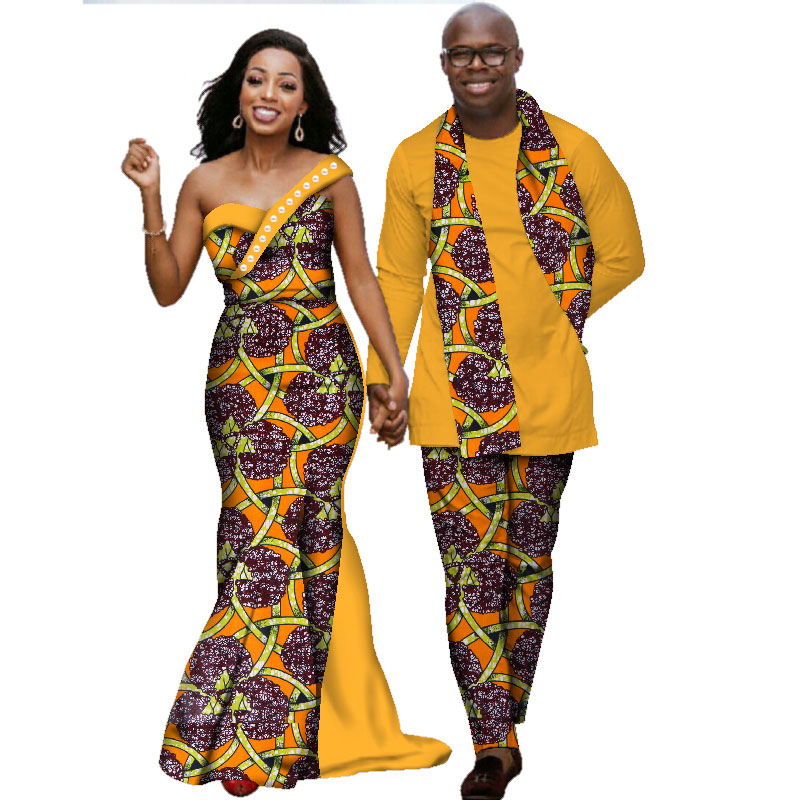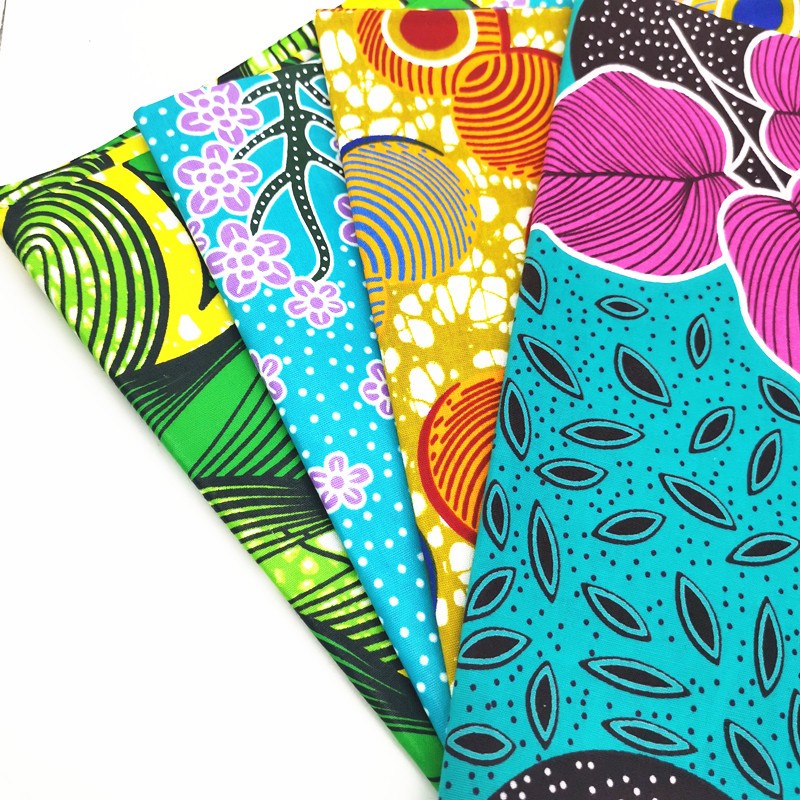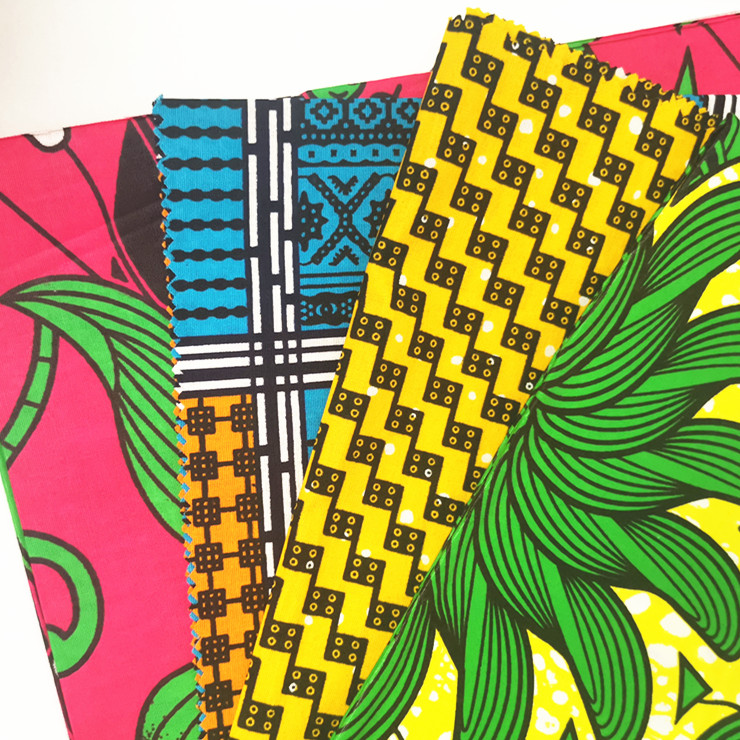Buy Authentic Ankara Fabric | Vibrant Wax Prints
The global textile market is witnessing a vibrant resurgence of traditional patterns, and at the forefront of this trend is the iconic ankara fabric. Also known as ankara wax print or African wax print, this 100% cotton material is celebrated for its bold designs, rich colors, and deep cultural heritage. Once primarily associated with West African fashion, ankara wax fabric has transcended geographical boundaries, becoming a staple in international haute couture, ready-to-wear collections, and modern home décor. According to recent market analysis, the African textile market, largely driven by fabrics like Ankara, is projected to grow at a CAGR of over 5% in the coming years, reflecting its increasing global demand.
This guide provides an in-depth exploration of ankara fabric, covering everything from its intricate manufacturing process to its diverse applications. We will delve into the technical specifications that define quality, compare leading manufacturing standards, and showcase how Jiexiang Textile's "Africa Fabrics Wax 100% Cotton African Print" stands as a paragon of excellence in this thriving industry.

Technical Deep Dive: Understanding Ankara Fabric Specifications
To truly appreciate the quality of an ankara wax textile, one must understand its core technical parameters. These specifications not only determine the fabric's look and feel but also its durability, colorfastness, and suitability for various applications. When you plan to buy ankara fabric, whether for personal use or as a wholesale ankara fabric distributor, these metrics are crucial for making an informed decision.
| Parameter | Industry Standard | Jiexiang Textile's Premium Standard | Significance for Quality |
|---|---|---|---|
| Material Composition | 80-90% Cotton, blended | 100% Premium Long-Staple Cotton | Ensures superior breathability, softness, moisture absorption, and durability. Prevents pilling. |
| Yarn Count | 24s - 32s | 40s*40s or higher | A higher yarn count results in a finer, smoother, and more lightweight fabric with a luxurious feel. |
| Fabric Density | 90*70 - 96*96 | 96*96 or customized higher densities | Higher density means a tighter weave, leading to a stronger, more opaque, and more durable fabric. |
| Weight (GSM) | 110-120 g/m² | 125-135 g/m² | Optimal weight for structure and drape, making it versatile for both apparel and crafts without being too heavy. |
| Printing Technology | Rotary Screen Printing | Advanced Wax-Resist Dyeing (Batik) | Creates the authentic "crackle" effect and ensures deep color penetration, making the design visible on both sides. |
| Color Fastness (to washing) | Grade 3-4 (ISO 105-C06) | Grade 4-5 (Excellent) | Guarantees minimal color bleeding or fading after repeated washes, preserving the vibrancy of the print. |
| Shrinkage Rate | 5-8% | < 3% | A lower shrinkage rate ensures that garments retain their original size and shape after washing ankara fabric. |
The Art and Science of Manufacturing: How Ankara Wax Print is Made
The unique aesthetic of ankara fabric is not the result of simple printing, but a meticulous, multi-step process known as wax-resist dyeing. This method, inspired by Indonesian Batik, is a testament to the fusion of craftsmanship and industrial technology. Here is a simplified breakdown of our manufacturing process, which adheres to stringent quality controls at every stage.
100% cotton fabric is scoured, desized, and bleached to create a pure white, absorbent canvas.
Engraved copper rollers apply molten wax resin to the fabric, creating the initial design and "resisting" the dye.
The waxed fabric is immersed in an indigo dye bath. The unwaxed areas absorb the deep blue color.
The fabric is mechanically stretched, causing the hardened wax to crack. This creates the signature veined or marbled effect.
Colors are block-printed onto the fabric. The cracked areas also absorb these new colors, adding complexity.
The fabric is washed in hot water to remove all wax. It is then softened, dried, and calendered for a smooth finish.

Data-Driven Comparison: Why Our Ankara Fabric Excels
At Jiexiang Textile, we believe in transparency and data-backed quality. Our product, the africa fabrics wax 100% cotton african print, consistently outperforms standard market offerings. The following visualizations illustrate our commitment to excellence.
Quality Metric Comparison
Material Composition
Premium Cotton
Our unwavering commitment to using only 100% long-staple cotton ensures unmatched quality and comfort.
Application Scenarios & Technical Advantages
The versatility of our ankara fabric makes it a preferred choice across numerous sectors. Its unique properties offer distinct advantages in each application.

High Fashion and Apparel
From stunning gowns on Parisian runways to everyday wear in Lagos, our ankara wax print is the fabric of choice for designers. Technical Advantage: The 40s yarn count and 96*96 density provide the perfect balance of structure for tailored garments and a soft drape for flowing dresses. The high colorfastness (Grade 4-5) ensures that couture pieces remain vibrant through their lifespan, a critical factor for high-value clothing. The 100% cotton composition offers exceptional breathability, making it ideal for clothing in both warm and temperate climates.
Home Décor and Upholstery
Interior designers increasingly use ankara fabric to add a splash of color and personality to living spaces. It is perfect for throw pillows, curtains, tablecloths, and light upholstery. Technical Advantage: The robust weave and weight (125-135 GSM) provide the necessary durability for home goods. Its resistance to fading from sunlight (tested via ISO 105-B02 standards) is superior to standard prints, ensuring that décor items retain their beauty even in well-lit rooms.
Accessories and Crafts
The unique patterns of ankara wax fabric are ideal for creating statement accessories like handbags, shoes, headwraps, and jewelry. Technical Advantage: The fabric's stability and low shrinkage rate (buy ankara fabric from a reliable source.
Manufacturer Comparison and Customization Solutions
Why Choose Jiexiang Textile for Wholesale Ankara Fabric?
When sourcing wholesale ankara fabric, partnering with a manufacturer that guarantees consistency, quality, and ethical production is paramount. Jiexiang Textile, with over 20 years of experience in the textile industry, has established itself as a trusted leader. Our Authoritativeness is backed by our long-standing partnerships with major fashion houses and distributors across Africa, Europe, and North America, and our adherence to international quality standards like OEKO-TEX STANDARD 100, which certifies that our fabrics are free from harmful substances.

Customization: Your Vision, Our Expertise
We understand that uniqueness is key in the fashion and design industries. We offer comprehensive customization solutions for clients seeking to create their own signature ankara fabric.
- Design Exclusivity: Provide your own artwork or collaborate with our in-house designers to create a unique pattern. We guarantee design confidentiality.
- Color Matching: Using the Pantone Matching System (PMS), we can replicate your brand's exact color palette.
- Custom Specifications: We can adjust yarn count, density, and fabric finish to meet the specific requirements of your project.
- Low MOQ: Our flexible production lines allow for accessible Minimum Order Quantities (MOQs) for bespoke designs, empowering both emerging designers and large brands.
Application Case Study: A Partnership with "Kente & Co."
Client: "Kente & Co.", a London-based fashion startup specializing in Afro-centric modern apparel.
Challenge: The client needed a reliable supplier for wholesale ankara fabric that was both authentic in its aesthetic and consistently high in quality, with low shrinkage and superior colorfastness for their premium ready-to-wear line.
Solution: Jiexiang Textile provided "Kente & Co." with our premium ankara wax fabric (40s*40s, 96*96). We also developed an exclusive custom pattern for their flagship collection, ensuring brand differentiation. Our rigorous quality control, which includes batch testing for colorfastness and shrinkage according to ISO standards, gave them the confidence to market their products as high-end, durable fashion.
Outcome (Experience): "Kente & Co." reported a 90% reduction in customer complaints related to color bleeding and shrinkage compared to their previous supplier. Customer feedback highlighted the "luxurious feel" and "vibrant, long-lasting colors" of the garments. This successful partnership allowed them to secure a feature in a major fashion magazine and expand their product line.

Frequently Asked Questions (FAQ)
The primary difference lies in the manufacturing process and the resulting characteristics. An authentic ankara fabric, or ankara wax print, is made using a wax-resist dyeing technique. This means the pattern is present on both sides of the fabric, often with tiny imperfections and a "crackle" effect from the wax breaking. A digital print, on the other hand, is printed only on the surface of the fabric, so the reverse side is typically much lighter or white. The wax process also results in deeper, more saturated colors that are more durable.
These are crucial technical specifications. Yarn Count (e.g., 40s) refers to the thickness of the cotton yarn used; a higher number indicates a finer, smoother, and more luxurious yarn. Fabric Density (e.g., 96*96) refers to the number of threads per square inch in the warp (length) and weft (width) directions. A higher density, like 96*96, means a tighter, more durable, and less transparent weave, which is a hallmark of high-quality ankara wax fabric.
Proper washing ankara fabric is key to its longevity. We recommend the following:
- Wash in cold or lukewarm water (max 30°C) on a gentle cycle.
- Use a mild detergent. Avoid harsh chemicals or bleach.
- To minimize fading, you can add a tablespoon of salt to the first wash.
- Wash with similar colors to prevent any potential (though minimal with our fabric) color transfer.
- Do not wring. Hang to dry in the shade to prevent sun damage. Iron on the reverse side with a medium heat setting.
Absolutely. We are a primary manufacturer and specialize in wholesale ankara fabric distribution. We offer tiered pricing based on volume, providing significant cost advantages for large orders. We work with designers, distributors, and large retailers globally. Please contact our sales team through our website to discuss your specific needs and receive a competitive quote. Our standard wholesale unit is typically a 12-yard bundle, but we can accommodate various packaging requirements.
The signature "crackle" or "veining" effect is a beautiful and authenticating feature of true ankara wax. It is created during a specific step in the manufacturing process. After the wax resin is applied and has hardened, the fabric is mechanically passed through a series of rollers that bend and stretch it. This intentionally cracks the brittle wax layer. When the fabric is later submerged in a dye bath, the dye seeps into these fine cracks, creating the unique marbled lines that are a beloved characteristic of the fabric.
Trustworthiness is a cornerstone of our business. Our fabrics are produced in facilities that adhere to ISO 9001 for quality management. More importantly for consumers and fashion brands, our ankara fabric is certified under OEKO-TEX STANDARD 100. This is a globally recognized, independent testing and certification system for textiles. It guarantees that every component of our fabric—from the cotton thread to the dyes—has been tested for harmful substances and is therefore harmless to human health.
Our standard production lead time for wholesale orders is typically 30-45 days, depending on the complexity and volume of the order. We provide a detailed timeline upon order confirmation. We stand firmly behind our product's quality. We guarantee that our ankara fabric meets the specifications outlined in our technical sheets, including colorfastness ratings and shrinkage rates. In the unlikely event of a quality defect, we offer a replacement or refund policy, subject to our terms and conditions. Our dedicated customer support team is available to assist with any inquiries or issues, ensuring a trusted and seamless partnership.
References & Further Reading
- Sylvanus, N. (2016). Patterns in Circulation: Cloth, Gender, and Materiality in West Africa. University of Chicago Press. - An academic look into the cultural and economic journey of wax prints.
- "African Wax Prints." V&A Museum. https://www.vam.ac.uk/articles/african-wax-prints - An authoritative article from the Victoria and Albert Museum on the history of ankara fabric.
- "Textile Coloration and Finishing: Recent Developments and Future Prospects." Journal of the Textile Institute, Volume 110, Issue 5, 2019. - For those interested in the technical advancements in dyeing and finishing processes relevant to high-quality textiles.
-
Hot Sale 180D CEY Crepe AirFlow Woven Fabric 100% PolyesterNewsNov.14,2025
-
Twill TR Fabric for Elastic Suits & Trousers, ShrinkproofNewsNov.14,2025
-
Grey Muslin Fabric — Soft, Durable, Bulk & Custom SizesNewsNov.14,2025
-
CEY Crepe Fabric, Plain Woven Airflow Polyester TextileNewsNov.14,2025
-
Wholesale Custom TR Fabric 80/20 Soft Arabic Thobe FabricNewsNov.14,2025
-
Polyester Cloth - Durable, Wrinkle-Resistant, Factory DirectNewsNov.05,2025
-
TR 80/20 Poly Viscose Twill Thobe & Suiting Fabric Easy-CareNewsNov.05,2025











